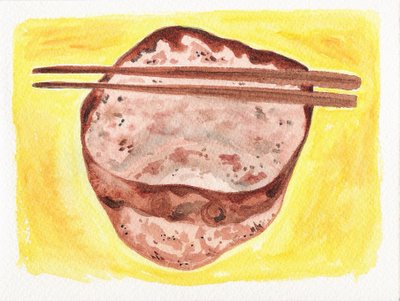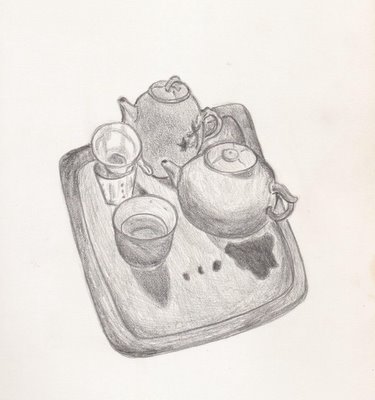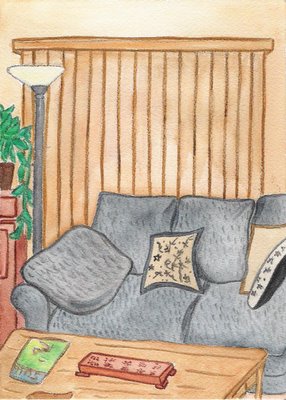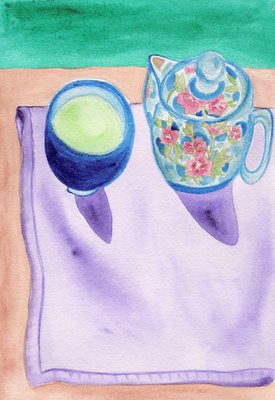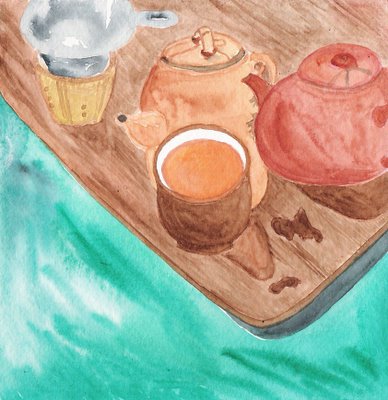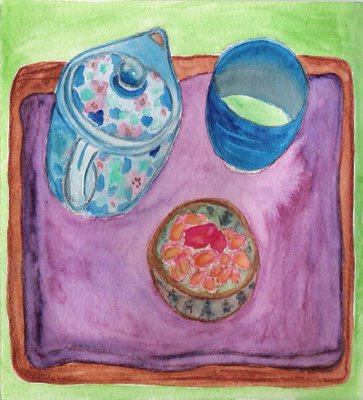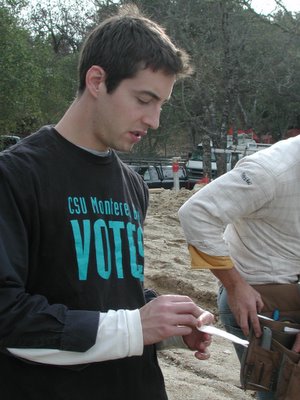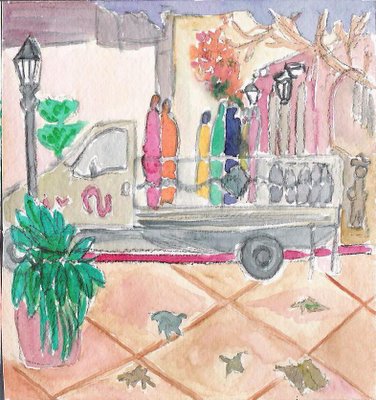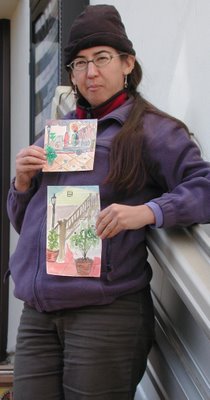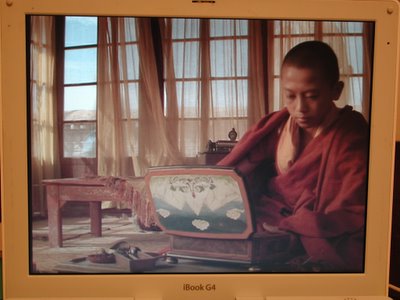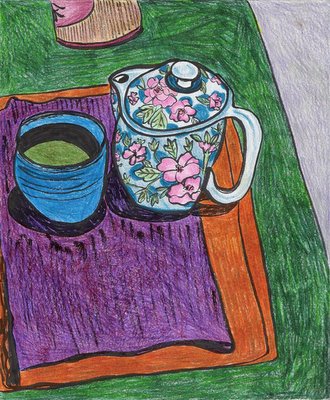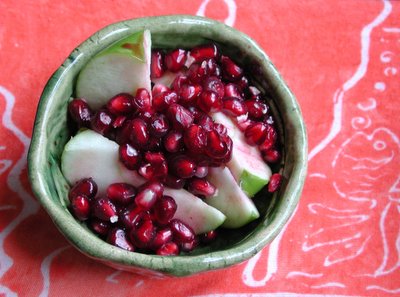
I sat down to write the following piece to express how I feel during this time of year—Christmas time in America—and this is what came out.
* * * * * *
First, for the things I like about the Christmas season: I enjoy looking at all the colored lights on houses and trees. I enjoy eating Christmas meals with friends, and making Christmas cookies. I’ve also had a lot of fun decorating friends’ Christmas trees and participating in various regional Christmas celebrations (in Boston; Aix-en-Provence; Paris; Santa Fe; Flagstaff; Athens, Georgia; and Monterey).
Now, for a piece of my holiday history and some thoughts on Christmas:
I don’t have the custom of celebrating Christmas because I am from a Jewish family, not a Christian one. We didn’t celebrate Christmas at all. I grew up in an all-Jewish neighborhood in suburban North Shore Chicago where I lived 'til I was 18.
There was only one non-Jewish family in my neighborhood and they had the only decorated house and Christmas tree around. The mother was from Poland and the kids went to Catholic school. Everyone else went to public school, temple school, and synagogue services. In my school district we got off for the Jewish holidays as well as for the popular Christian ones. We didn’t make Christmas art and Easter bunny art in school like they do in places without a sizeable Jewish population—it was definitely not
PC in the North Shore—and that was before the term
PC was used!
We celebrated Hanukah, a Jewish holiday which often falls around the time of Christmas. I still enjoy lighting the candles of the
hanukkiah. A
hanukkiah is a
menorah (candle holder) used during the eight days of Hanukah. I like singing Hanukah songs, playing
dreidel (a game in which you spin a clay top), and I like making and eating
latkes (potato pancakes). However, for Jews, Hanukah is really a minor holiday. The fact that the first day of Hanukah often falls at the time of Christmas has led some people to think of it as the Jewish counterpart to Christmas. But, it is not that; Hanukah is not the Jewish Christmas.
Despite growing up in a Jewish neighborhood, going to Temple, celebrating the Jewish holidays with family, and having many Jewish friends, as an American from a suburban-urban area, I was influenced by all the Christmas commercialism and television shows. Every year we watched our favorite Christmas specials on tv. A few of my favorites were: Frosty the Snowman; Rudolph the Rednose Reindeer; the Grinch; Kris Kringle; the Bob Hope and Bing Crosby specials; and “It’s a Wonderful Life”. Most of these shows portrayed Christmas as an event that takes place in the Northern hemisphere among Caucasians during a snowy winter.
The larger culture celebrated Christmas with Santa Claus, lit trees and houses, decorations, and gift giving galore. Naturally, being Jewish, we didn't participate in the popular Christmas culture, yet how could you not see it? Christmas is everywhere. It begins soon after Thanksgiving—on television and in the stores-- and even in school. Today, some US public schools/teachers have gotten a little more PC. They are teaching children that other celebrations exist besides the stereotypical white Christian ones. In large cities you will find multicultural classrooms composed of kids from many countries and cultures: Chinese, Vietnamese, Hmong, Japanese, American Indian tribes, African-American, India, Africa, Middle East, etc. Some parents rightfully complain when their child comes home with art projects and other school artifacts that represent only the white American Christmas culture, and which excludes their own.
When you are a child and everywhere bombarded with Christmas culture and Christmas consumerism, you are affected. To a Jewish child in a predominantly non-Jewish Christmas culture, not having a tree at home and not getting to decorate it can feel like deprivation. However, now I feel lucky! Though it took me many years to understand it this way, not celebrating Christmas is not a deficit. I have no ingrained cultural habit that propels me to participate in the rampant materialism of Christmas. I don’t have to go rushing out to buy Christmas gifts and cards for everyone I know. I don't have to make a list and check it twice (oh--that's Santa's job).
In reality, Jewish parents (and other non-Christmas celebrating families of other faiths and cultures) find themselves having to explain to their kids why they don’t get Christmas gifts, why there is no tree, and why Santa and his elves do not visit their houses when all around them Christmas is supported and glorified. It is important that we nurture and highlight our different cultural celebrations without seeing them as lacking what the majority culture has.
* * * *
At 16, I started learning on my own about Jesus and Christianity. I wanted to know what the fuss was all about. And, I wanted to know why the name
Jesus was never uttered in temple or at home. At night, I would read a copy of the King James version of the bible that we had in the house. I read by candlelight after everyone was sleep. I liked the teachings of Jesus; they resonated with me. Jesus was a
rabbi, a great teacher.
Christmas spirit is about Christ's teachings of love and peace; it is a day that celebrates a being who was born to show his light—just as we are born to show ours. The celebration of Christmas in the darkest part of the year coincides with the coming light of the Solstice. We look forward to the light of lengthening days; we need to know there is light coming our way. That light—
kristos--manifested as Christ.
It feels so good to share our light with others at Christmas/Solstice because it is our nature to offer what is needed and enjoyed: a gift, a smile, a story, listening ears, laughter. It is natural to share our light and love with all beings. At Christmas time our culture does support this sharing.
Our culture also supports war: the war on drugs, the war on terrorism, the war on....just about anything. A true Christ-mas culture would not wage war on others; it would offer shelter and forgiveness and material help to those in need. It would not sentence prisoners to death. A Christ-mas culture would teach its children to love all cultures, religions, and languages of the world. It would listen to those who are hurting and angry and allow them to speak. It would not spend half of our tax dollars on war; it would instead invest our tax dollars in peace.
Christmas in America is all tangled up with our consumer culture.
Giving gifts is fun. I like the surprise and delight in gifting and receiving. Yet the true spirit of Christmas--Love, peace, caring (charity), and forgiveness—can be easily forgotten at this time of year. And, we are still waging war in Iraq. We could be giving food, shelter, clothing, and education to those in need, not waging the wars that create these needs. We could be spending gazillions on education and the arts within our own country rather than on war in another country.
Could we respect that not everyone wants the same type of education, political process, or material assistance as in the US?
These are a few of my thoughts during this Christmas season in America.
And a song to celebrate Solstice:
This little light of mine, I'm gonna let it shine This little light of mine, I'm gonna let it shineThis little light of mine, I'm gonna let it shine Let it shine, let it shine, let it shine!
